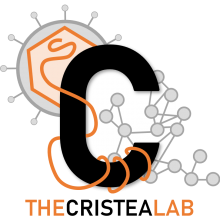Systematic discovery of structural elements governing stability of mammalian messenger RNAs
Type
Decoding post-transcriptional regulatory programs in RNA is a critical step towards the larger goal of developing predictive dynamical models of cellular behaviour. Despite recent efforts, the vast landscape of RNA regulatory elements remains largely uncharacterized. A long-standing obstacle is the contribution of local RNA secondary structure to the definition of interaction partners in a variety of regulatory contexts, including--but not limited to--transcript stability, alternative splicing and localization. There are many documented instances where the presence of a structural regulatory element dictates alternative splicing patterns (for example, human cardiac troponin T) or affects other aspects of RNA biology. Thus, a full characterization of post-transcriptional regulatory programs requires capturing information provided by both local secondary structures and the underlying sequence. Here we present a computational framework based on context-free grammars and mutual information that systematically explores the immense space of small structural elements and reveals motifs that are significantly informative of genome-wide measurements of RNA behaviour. By applying this framework to genome-wide human mRNA stability data, we reveal eight highly significant elements with substantial structural information, for the strongest of which we show a major role in global mRNA regulation. Through biochemistry, mass spectrometry and in vivo binding studies, we identified human HNRPA2B1 (heterogeneous nuclear ribonucleoprotein A2/B1, also known as HNRNPA2B1) as the key regulator that binds this element and stabilizes a large number of its target genes. We created a global post-transcriptional regulatory map based on the identity of the discovered linear and structural cis-regulatory elements, their regulatory interactions and their target pathways. This approach could also be used to reveal the structural elements that modulate other aspects of RNA behaviour.

